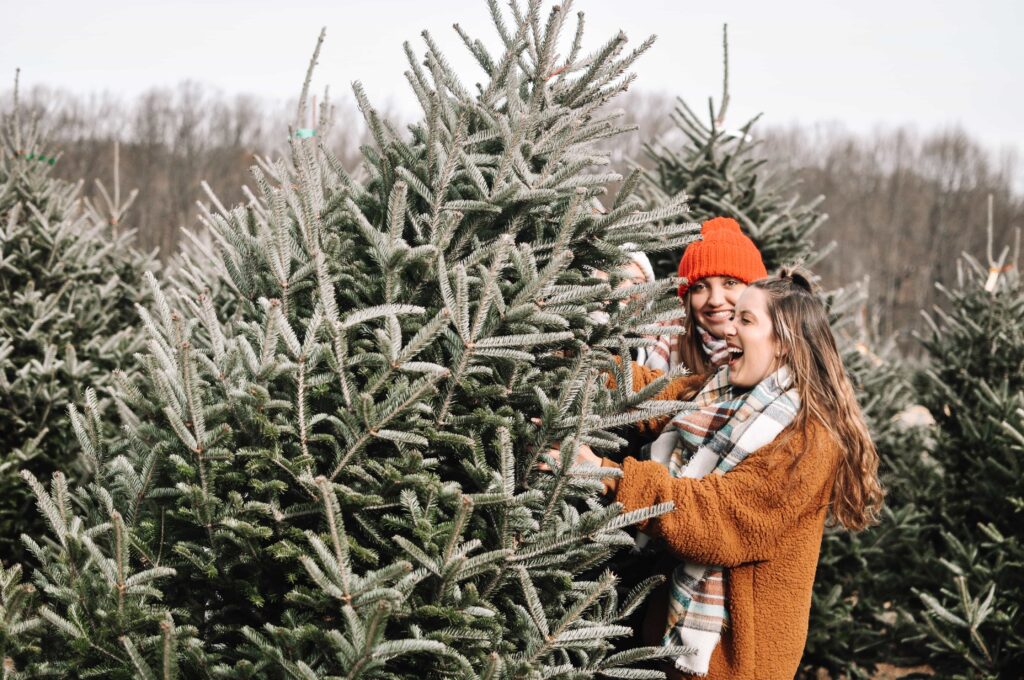Christmas trees are a quintessential part of the festive season, symbolizing joy, warmth, and the spirit of giving. These evergreen beauties are adorned with twinkling lights, ornaments, and gifts, creating a magical atmosphere in homes, public spaces, and places of worship around the world.
Key Takeaways:
- Christmas trees have a rich history and are a symbol of joy and celebration during the festive season.
- They can be real or artificial, each having its own set of benefits and considerations.
- Decorating Christmas trees is a cherished tradition, with various styles and themes available.
- Sustainable practices are essential in choosing and disposing of Christmas trees.
A Glimpse into the History of Christmas Trees
Origins and Evolution
The tradition of decorating trees during wintertime has roots in ancient civilizations, long before the advent of Christianity. Ancient Egyptians, Romans, and Celts brought green palm rushes and branches into their homes as symbols of eternal life and to celebrate the winter solstice. The modern Christmas tree, as we know it, originated in early modern Germany with devout Christians bringing decorated trees into their homes.
Spread Across the Globe
The Christmas tree tradition spread across Europe and reached American shores in the early 1700s, brought by German immigrants. By the 1890s, Christmas trees had become popular in the United States, and the tradition continues to evolve, with trees now being decorated with a plethora of ornaments, lights, and tinsel.
Types of Christmas Trees
Real Trees
Jõulukuused are a sustainable and renewable resource, often grown on tree farms specifically for the holiday season. They provide a fresh, festive scent and a traditional feel to the celebrations. However, they require regular watering and can shed needles, necessitating cleanup.
Popular Varieties of Real Trees:
- Fraser Fir: Known for its pleasant fragrance and strong branches.
- Balsam Fir: Valued for its long-lasting freshness and aromatic scent.
- Douglas Fir: Offers a sweet scent and lush appearance.

Artificial Trees
Artificial Christmas trees are a convenient alternative, requiring less maintenance and offering a uniform appearance. They are reusable, making them a cost-effective option over the years. However, they are typically made from PVC plastic, which is non-biodegradable.
Benefits of Artificial Trees:
- No Maintenance Required: No watering or cleanup of shed needles.
- Variety of Styles: Available in various sizes, colors, and designs.
- Cost-Effective: One-time investment that lasts for years.
Decorating the Christmas Tree
Choosing a Theme
Choosing a theme for the Christmas tree is a creative process that reflects personal style and preferences. Themes can range from traditional red and green to winter wonderland, rustic, or even specific color schemes. Incorporating elements like ribbons, stars, and angels can add a unique touch to the tree.
Placement of Ornaments
The placement of ornaments is crucial in achieving a balanced and harmonious look. Starting from the top and working downwards, with larger ornaments at the bottom, ensures a cohesive appearance. Mixing different shapes, sizes, and textures adds depth and interest to the tree.
Sustainability and Christmas Trees
Eco-Friendly Choices
Making eco-friendly choices is vital in minimizing the environmental impact of Christmas trees. Opting for a real tree from a sustainable farm or an artificial tree made from recycled materials are steps in the right direction. Additionally, using LED lights and eco-friendly decorations reduces energy consumption and waste.
Disposal and Recycling
Proper disposal and recycling of Christmas trees are essential in reducing waste and environmental harm. Many communities offer tree recycling programs that turn discarded trees into mulch or wood chips. Artificial trees, on the other hand, can be donated or resold if they are in good condition.
The Symbolism of Christmas Trees
A Symbol of Life and Renewal
Christmas trees, with their evergreen leaves, symbolize eternal life and the renewal of life during winter. They stand as a reminder of hope and resilience, bringing joy and warmth to households during the festive season. The lights and stars adorning the tree represent the light of Christ and the Star of Bethlehem, guiding the way in the darkness.
A Reflection of Culture and Tradition
The way Christmas trees are decorated often reflects the culture, traditions, and personal preferences of individuals and communities. Different countries and regions have their unique ways of decorating Christmas trees, incorporating local crafts, colors, and symbols, making each tree a unique piece of art.

The Economic Impact of Christmas Trees
A Booming Industry
The Christmas tree industry is a significant contributor to the economy, especially in countries like the United States, Canada, and Denmark. Millions of real and artificial trees are sold every year, generating substantial revenue for tree farmers, manufacturers, and retailers.
Economic Contributions:
- Employment: The industry provides jobs to thousands of people in farming, manufacturing, and retail.
- Local Economies: Tree farms and sellers contribute to the local economy by attracting buyers from nearby areas.
- Charitable Contributions: Many businesses in the industry donate a portion of their profits to charitable causes during the holiday season.
Challenges and Opportunities
While the industry is lucrative, it faces challenges such as climate change affecting tree growth and market fluctuations influencing prices. However, innovations in sustainable farming and the development of eco-friendly artificial trees present opportunities for growth and environmental conservation.
Christmas Trees Around the World
Diverse Traditions and Decorations
Christmas trees are decorated in myriad ways around the world, reflecting the diversity of cultures and traditions. For instance:
- Germany: Often credited with starting the Christmas tree tradition, Germans typically decorate their trees with apples, nuts, and other edibles.
- Mexico: In Mexico, Christmas trees are adorned with intricate ornaments, including angels, flowers, and ribbons, reflecting the vibrant local culture.
- Japan: While Christmas is not a national holiday in Japan, Christmas trees are decorated with origami and lanterns, blending local artistry with the festive spirit.
Public Displays and Celebrations
Many cities around the world erect colossal Christmas trees in public spaces, attracting tourists and locals alike. These trees are often adorned with thousands of lights and ornaments, becoming the centerpiece of grand celebrations and events.
Notable Public Christmas Trees:
- Rockefeller Center, USA: This iconic Christmas tree is a symbol of the holiday season in New York City, drawing millions of visitors every year.
- Trafalgar Square, UK: London’s Trafalgar Square hosts a majestic Christmas tree every year, a gift from Norway as a token of gratitude for British support during World War II.
- Vatican City: The Christmas tree in St. Peter’s Square is a significant attraction, representing peace and unity during the festive season.
Conclusion: The Timeless Charm of Christmas Trees
Christmas trees are much more than decorative elements of the holiday season. They are symbols of life, hope, and unity, bringing people together in celebration. The rich history, diverse traditions, and economic impact of Christmas trees make them an integral part of the festive season across the globe.
Final Thoughts:
- Embrace Diversity: The varied traditions and decorations of Christmas trees around the world reflect the beauty of cultural diversity.
- Sustainability Matters: Choosing sustainable options and disposing of trees responsibly is crucial for environmental conservation.
- Spread Joy: The joy and warmth that Christmas trees bring are invaluable, spreading love and happiness during the festive season.
